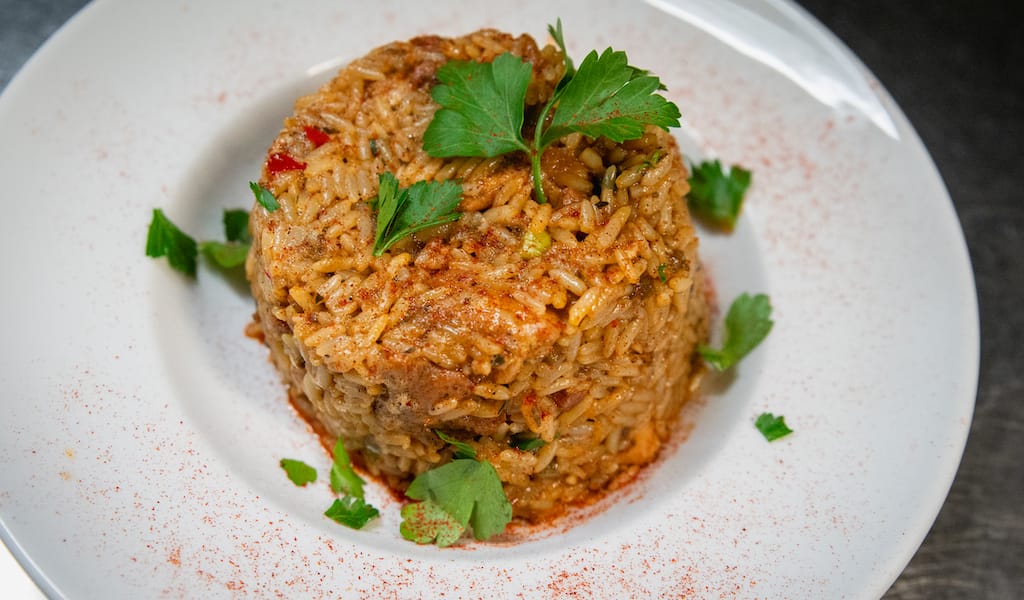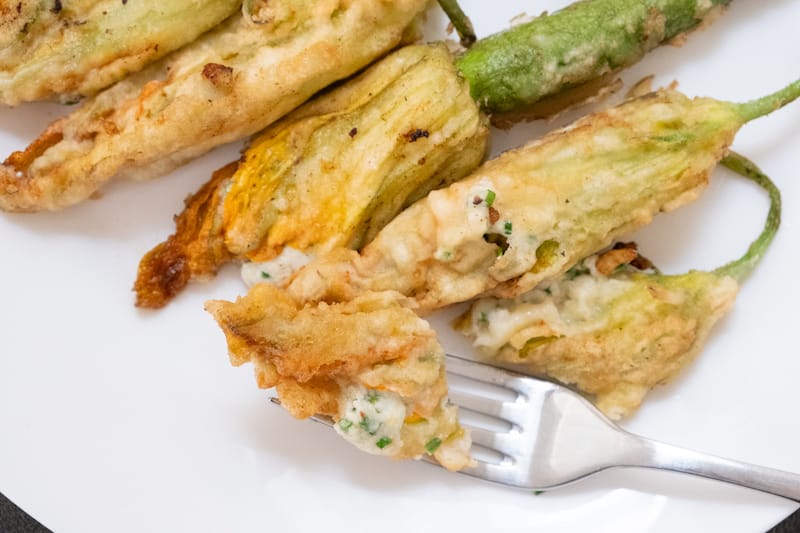Jambalaya, the rice dish that stands at the crossroads of culture and cuisine, is a staple of celebration, mourning and everything in between in Louisiana. From tailgates to Mardi Gras to repasts and backyard cookouts, it is a ubiquitous food that can be a main or a side dish. The roots of the dish can be traced to West African jollof rice, as well as Spanish paella. At its essence, jambalaya is an odds-and-ends dish that feeds a multitude, a humble rice dish with some meat and/or seafood cooked into it by way of a flavorful broth. As for the origins of the name jambalaya, there are as many theories as the grains of rice contained within. Some believe it to come from the Provençal word jambalaia, which means a mishmash. Others believe the name of the dish came from a Spanish interpretation of a Native American phrase akin to “bon appetit.” Regardless of the origins of the name, this filling and fragrant rice dish never misses.
There are two main styles of jambalaya, red and brown, and the color is determined both by ingredients and cooking methods. In New Orleans, you are more likely to encounter a Creole “red jambalaya” that contains a tomato component alongside a combination of shrimp, chicken, ham and smoked sausage. In Cajun country, a more rustic “brown jambalaya” will usually contain chicken and andouille or some type of wild game.
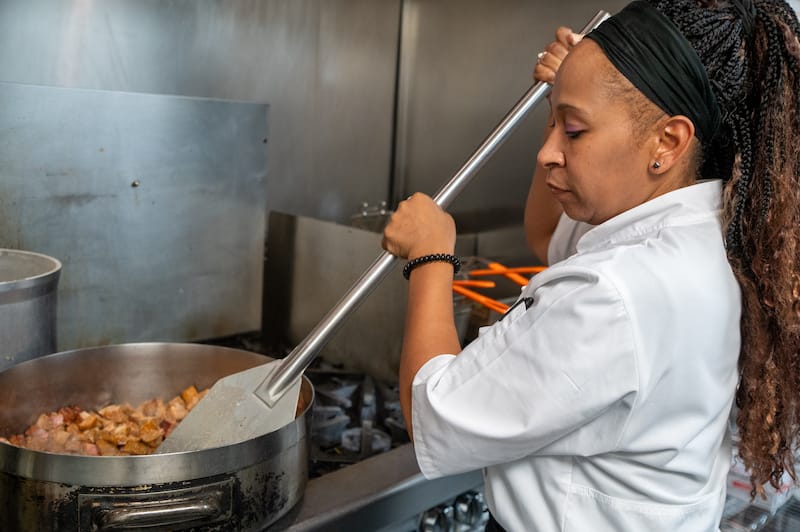
While jambalaya is eaten year-round in New Orleans, its peak season coincides with the beginning of college football and runs through Mardi Gras, and it is not unusual to see simmering cauldrons of the dish wherever locals gather. In fact, like many traditional New Orleans dishes, it’s best cooked in large batches, which allow for the development of deep flavor and the ability to feed the masses from one pot. And unlike gumbo, which is also a popular fall staple, jambalaya is easy to eat standing up while gathered around the TV watching football.
While the ingredients vary from the Creole to the Cajun, what does not change is the importance of a flavor base that imbues the rice with both spice and umami. In both the Creole and Cajun versions, this base always includes “the trinity,” of diced onions, bells peppers and celery – a Louisiana sofrito, if you will – as well as garlic and fresh herbs and spices, of course. And the importance of a rich, flavorful stock can’t be overstated. In the Creole version, this is usually a chicken or shellfish stock – sometimes a combination of both – combined with a savory tomato sauce. The result is a beautifully redolent rice dish with layers of flavor and a pleasant acidity. You’ll find this version served in Creole households as well as old-line Creole restaurants like Dooky Chase and Li’l Dizzy’s Café.
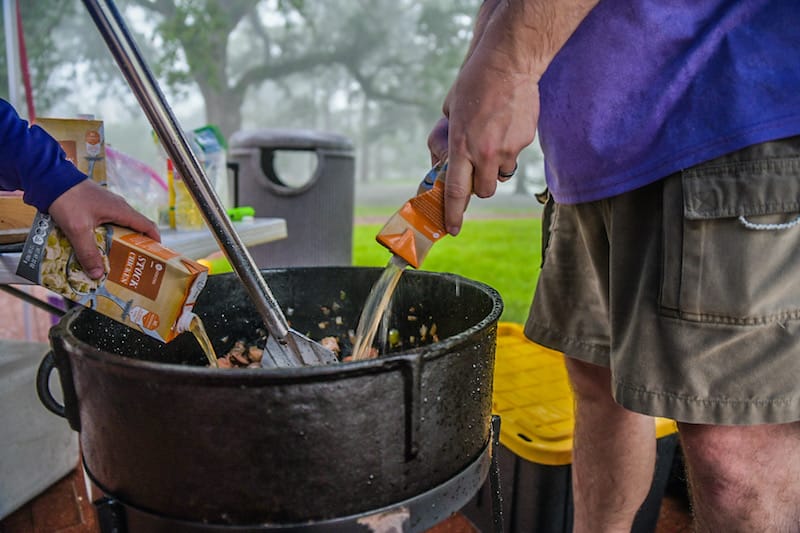
The Cajun brown version, while more straightforward in its ingredients, derives its deep and complex flavor from a process of browning and scraping, letting the fond develop, and deglazing, the rice turning a rich brown as it is cooked with intensely caramelized meats and vegetables. The process takes time, as the meats are often browned separately and removed from the pot before the the trinity is added and browned. Then everything is returned to the pot to slowly simmer. This is the version that dominates the fall and is omnipresent at tailgates.
And as a dish whose main ingredient is rice, the choice of rice is critical. While parboil rice has become popular in recent years because it’s hard to overcook, the dish is traditionally made with fragrant long grain rice, which can’t be beat for flavor. But regardless of which rice you use, the most important thing is not to overcook it.
Since it’s football season in Louisiana, the recipe below is for a Cajun-style brown jambalaya, although it includes tomato paste – while not a traditional ingredient, it’s one we feel really helps bind the flavors together. Make this recipe in big batches and eat it with as many friends as possible. It’s the Louisiana way.
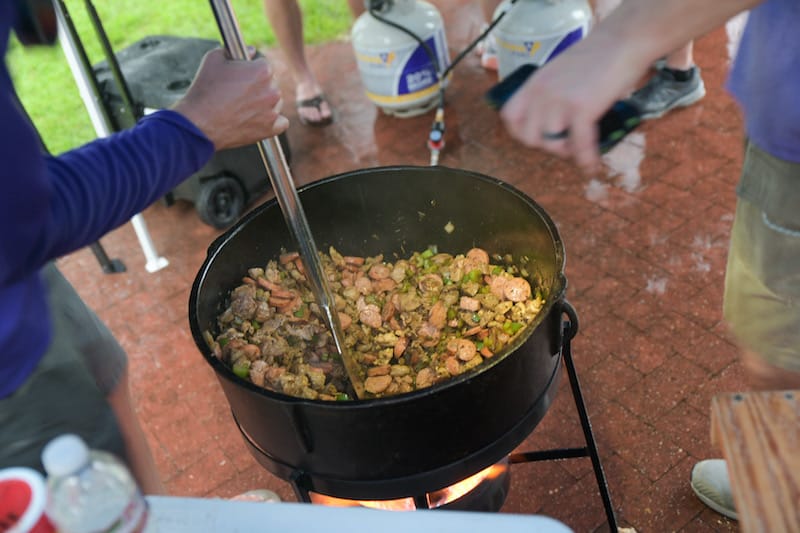
Recipe: Cajun-Style Jambalaya
Serves 4-6
Ingredients
2 tablespoons canola oil
1-2 Tablespoons bacon fat
1 pound andouille or smoked sausage, cut into 1/4-inch thick rounds
1 pound tasso or smoked ham, cubed
3 pounds chicken thighs cubed
2 cups onions, diced
1 cup celery, diced
1 cup green bell pepper, diced
1 cup red bell pepper, diced
1 tablespoon minced garlic
2 teaspoons salt
1 teaspoon black pepper
1 teaspoon cayenne pepper
1/4 teaspoon white pepper
1 teaspoon garlic powder
2 teaspoon dried thyme
2 teaspoon dried oregano
3 bay leaves
2 ounces tomato paste
1 teaspoon Tabasco hot sauce
1 teaspoon Worcestershire sauce
1/2 teaspoon Soy Sauce
2 1/2 cups chicken stock
2 1/2 cups beef stock
4 cups rice, long grain or parboil
2 ounces butter
1 bunches green onions, sliced
Equipment:
8-10 quart dutch oven
1 long handled wooden spoon
Good quality kitchen knife
Large cutting board
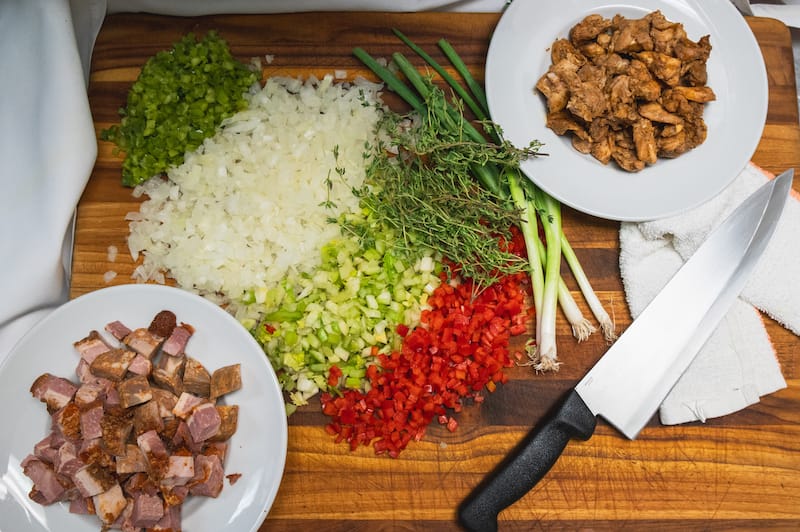
Instructions:
Place a large dutch oven (8-10 quarts) over medium high heat and add the cooking oil and bacon fat. When fat begins to smoke, add the smoked sausage and tasso and brown until the meat begins to stick, then scrape the bottom of the pot with a wooden spoon to pick up the fond (caramelized bits left in the bottom of the pot).
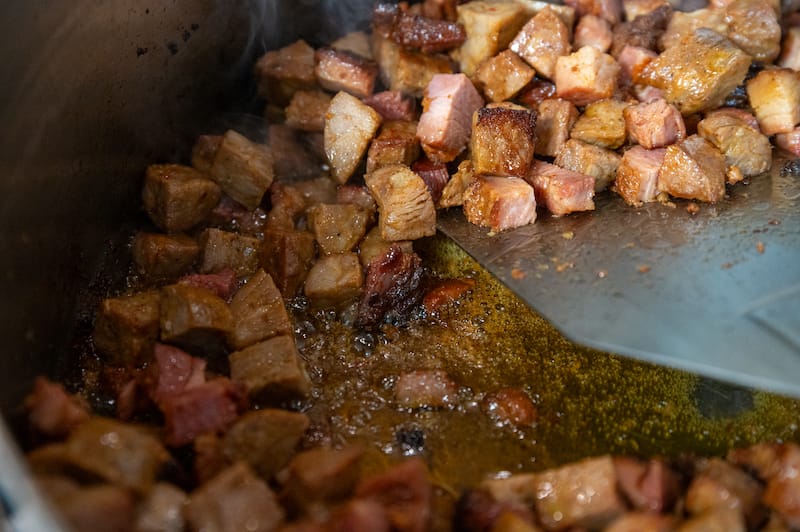
When the sausage and tasso are thoroughly browned, remove them from the pot and reserve, and then add the chicken and repeat the procedure. You may need to deglaze with a little water to prevent the fond from burning. When the chicken is browned completely, remove from the pot and reserve. Then add the onions and saute for five minutes until lightly browned, followed by the celery and bell peppers and keep browning. You want to derive your color from this, so allow the veg to stick and scrape. Again, you can deglaze with water if necessary.
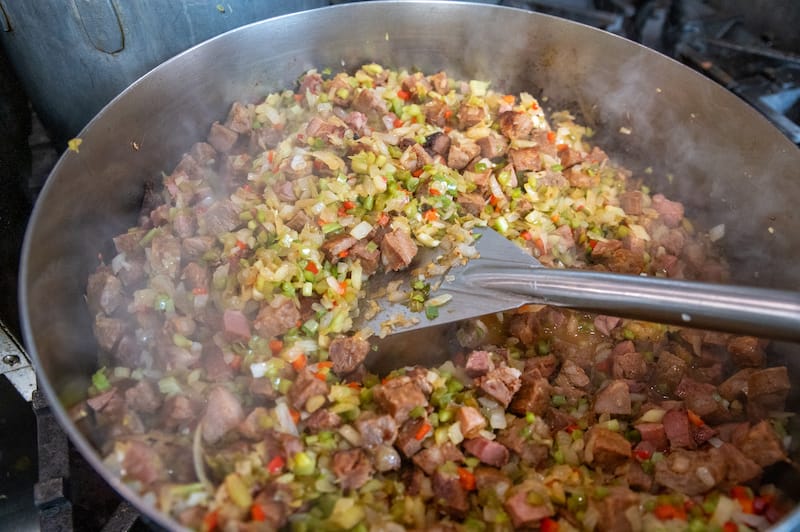
When the onion, celery and bell pepper mixture is a golden brown, add in your garlic and sauté for another 5 minutes. When the vegies is brown add the seasonings and herbs and tomato paste, and lightly toast. At this point return all the meat to the pot, and then add the Tabasco Sauce and Worcestershire sauce and the chicken and beef stocks, and bring to a boil. Also add the butter at this time.
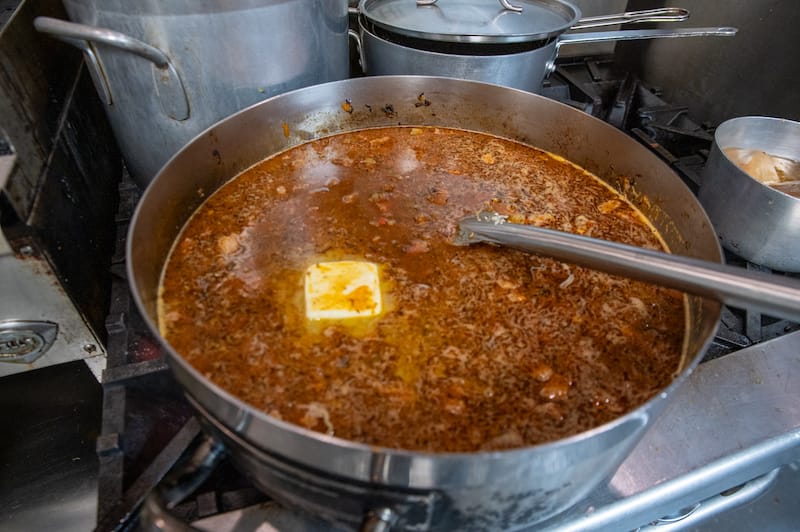
When the pot comes to a rolling boil, taste and adjust the seasoning. You want the base to be slightly overseasoned, because the addition of the rice will cut the seasoning. Add rice to the boiling pot and stir it in thoroughly, then reduce the heat to a low flame and cover the pot. After 10 minutes, stir to make sure rice isn’t sticking, then cover again for 10 more minutes. After 20-25 minutes turn off fire and let rice continue to carryover cook until tender but not mushy. To finish, stir the green onions into the jambalaya and divide into as many bowls as you have people. This recipe can be scaled up to feed an army, but this version will feed four to six people.
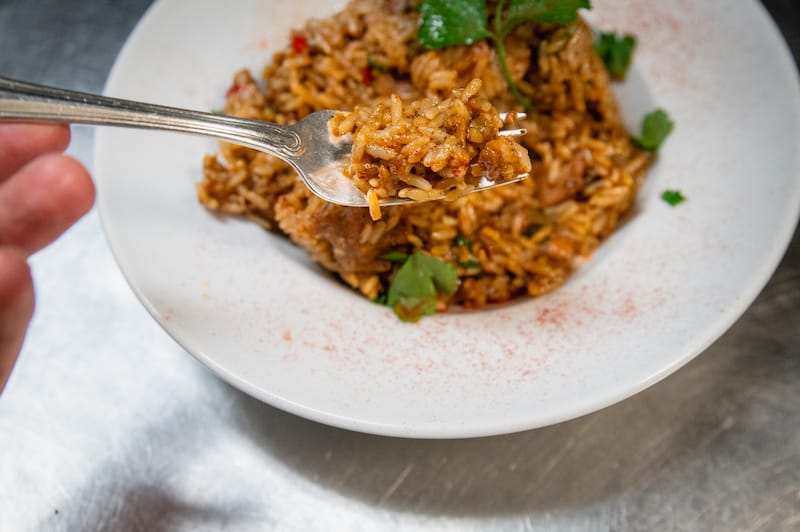
 July 17, 2024 Recipe
July 17, 2024 Recipe
Back in the day, according to legend, a man named Köpoğlu spent all his money on rakı, […] Posted in Istanbul July 4, 2024 Recipe
July 4, 2024 Recipe
Summer markets in Marseille come alive, bathed in a colorful, brilliant bounty when […] Posted in Marseille June 25, 2024 Recipe
June 25, 2024 Recipe
We’re in Os Papagaios, the restaurant Joaquim Saragga oversees in Lisbon’s Arroios […] Posted in Lisbon
James CullenJames Cullen
Published on October 30, 2023
Related stories
July 17, 2024
Istanbul | By Lian Penso Benbasat
IstanbulBack in the day, according to legend, a man named Köpoğlu spent all his money on rakı, the Turkish spirit made from grapes and anise, and was left with no money to buy food. Hungry, pockets empty, he went home and grabbed a couple of eggplants, some tomatoes and garlic from his garden and threw…
July 4, 2024
MarseilleSummer markets in Marseille come alive, bathed in a colorful, brilliant bounty when fruits and vegetables are in their prime. There are over 25 open markets in Marseille and, every Saturday, our mornings are booked. We set out to one of our neighborhood favorites, the market at Place Sébastopol in the town center, to search…
June 25, 2024
LisbonWe’re in Os Papagaios, the restaurant Joaquim Saragga oversees in Lisbon’s Arroios neighborhood, where we’ve asked him to show us how to make one of Lisbon’s more iconic dishes: ervilhas guisadas, peas braised with Portuguese sausages, typically crowned with poached eggs. Come spring, Portugal revels in green-hued produce: fava beans, asparagus, artichoke, spinach and other…







































